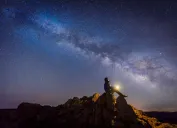Meteor Shower Will Create "Fireballs" in the Sky Tonight—Here's How to See Them
The dazzling Alpha Capricornids will peak alongside an equally spectacular "supermoon."
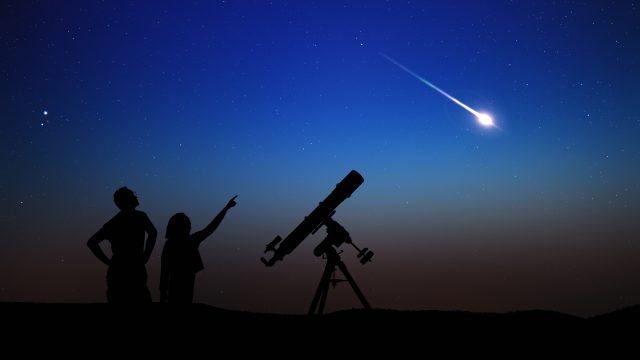
The warmer summer weather alone can often be a good enough excuse to get cozy outdoors and marvel at the wonders of the night sky. But coincidentally, some of the most anticipated annual celestial events also happen to take place during this time of year. Now, a series of extraordinary sights will unfold as a meteor shower will create "fireballs" in the sky tonight, alongside some other easy-to-spot surprises. Read on for more on how you can see this extraordinary sight yourself.
READ THIS NEXT: A Special Solar Eclipse Will Create a "Ring of Fire" in the U.S.—Here's How to See It.
Astronomers say the Alpha Capricornids will create "fireballs" in the sky tonight.
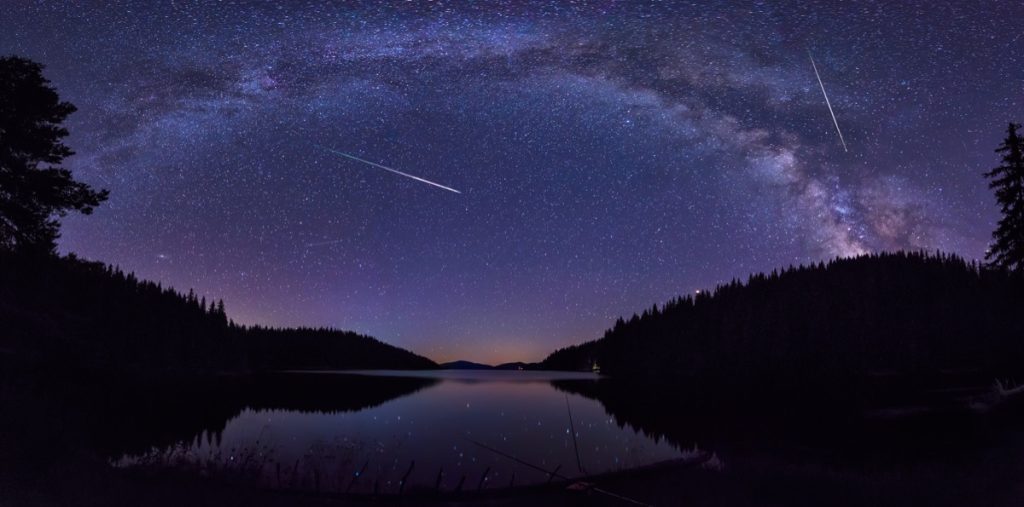
Amateur astronomers know that late July through August is an exciting time for stargazing thanks to the handful of annual events that occur then. That includes the Alpha Capricornid meteor shower, which is currently underway and will produce brilliantly bright "fireballs" in the sky tonight, according to the American Meteor Society.
While the "shooting stars" created by this event have been visible since the first week of July, the show is currently hitting its peak and producing some spectacular sights. Photographers have been lucky to capture a higher-than-average number of dazzlingly bright explosions in the sky over the past week, EarthSky reports.
The latest celestial event is also coinciding with other major meteor showers.
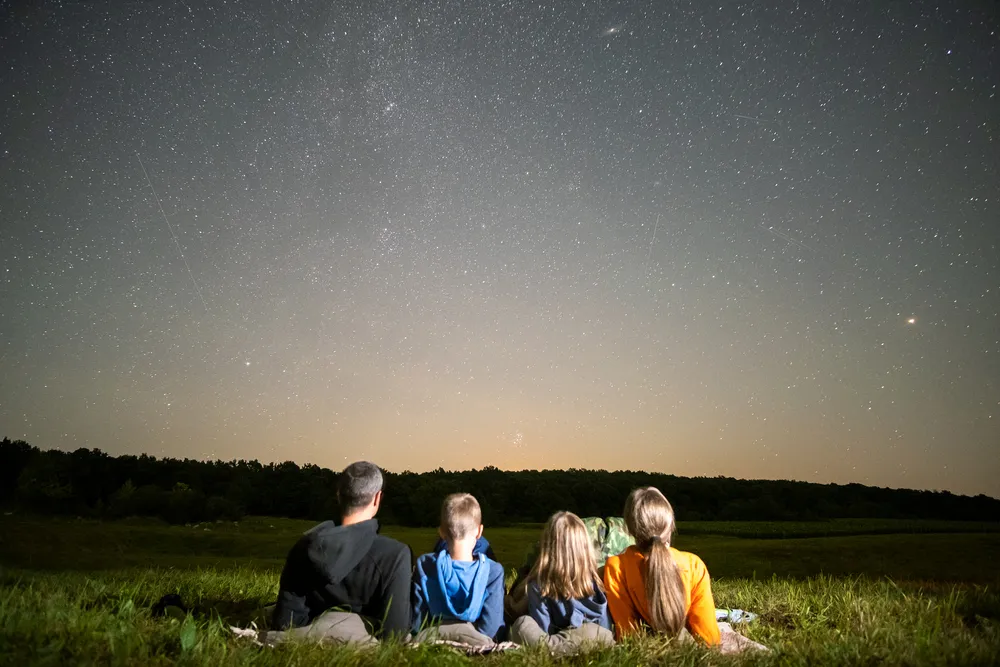
While astronomers have marveled over the intensity of this year's show, the Alpha Capricornids typically receive less attention because they produce an average of about five meteors per hour at their most active. But anyone who makes a point to get outside to catch the show will get to witness more than just one event.
The Southern Delta Aquariid meteor shower is also taking place right now, having reached its peak over the weekend, per NASA. The annual event is created by Earth passing through the dust trail left behind by comet 96P/Machholz, which was discovered in 1986 and orbits our planet every five years.
And while this show isn't known to create "fireballs" quite as bright as the Alpha Capricornids, it's still four times as active with an average of roughly 20 meteors per hour that will begin to taper off as they wind down through the first three weeks of August.
And as if there weren't already enough activity in the night sky, the Perseid meteor shower is also underway. The event is described as the "best meteor shower of the year" by NASA, creating a combination of long, colorful "wakes" shooting across the sky and fireballs that create "explosions of light and color that can persist longer than an average meteor streak" even ahead of its peak on Aug. 13.
RELATED: For more up-to-date information, sign up for our daily newsletter.
An impossible-to-miss supermoon will also take place tomorrow night.
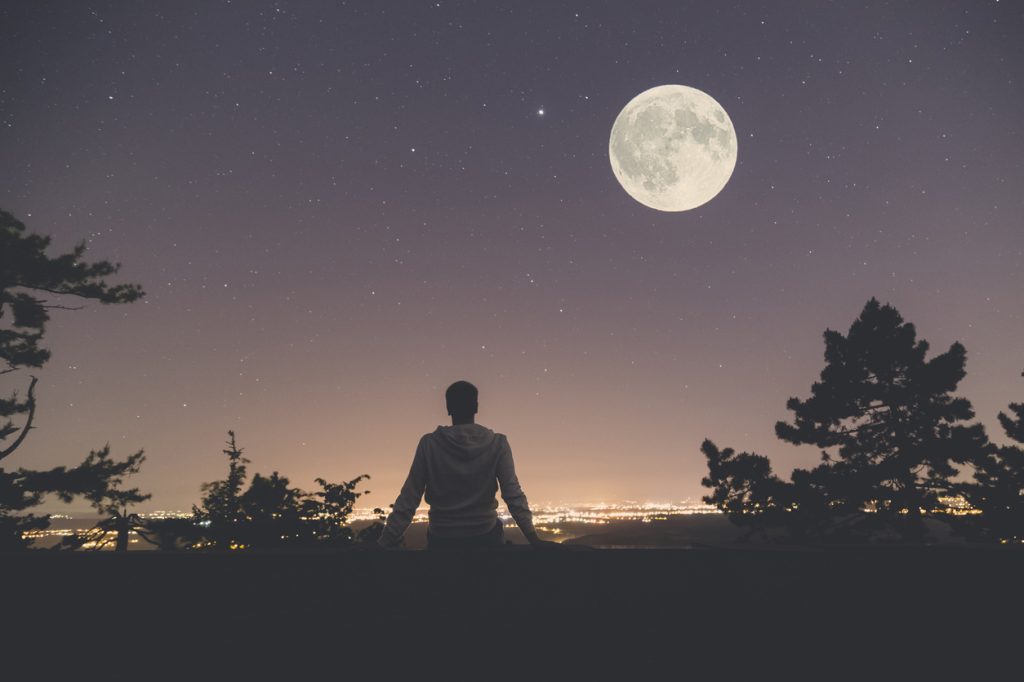
Even though it's impressive to catch a colorful fireball falling from above, it's impossible to look up at the night sky and not notice the brilliance of a full moon. And tomorrow night, anyone hoping to spot meteors will witness an even bigger spectacle than usual as a "supermoon" emerges.
According to NASA, the term refers to when the moon reaches its closest point to the Earth in its elliptical orbit during a full phase, making it appear "brighter and larger than a regular full moon." The phenomenon will be visible once again this month when a second full moon—or "blue moon"—appears on Aug. 30, according to the Farmer's Almanac.
Typically, the brightness of even a regular full moon can make it more difficult to enjoy meteor showers as the reflected light from our orbiting neighbor drowns out other objects. But since the Alpha Capricornids tend to flash even stronger than Venus—one of the brightest objects in the night sky besides the moon—they'll still be visible, EarthSky reports.
Following a few simple tips can improve your meteor shower viewing experience.

If you plan on taking in all of the impressive sights the night sky has to offer, there are a few ways to set yourself up for stargazing success. It's best to try to pick a viewing spot that's far away from bright city and street lights, according to NASA. Once you've settled into a place that gives you an expansive view of the sky, you'll still need roughly 30 minutes for your eyes to fully adjust to the darkness‚ which includes not looking at your phone or devices with bright screens.
Even though weather conditions are likely warmer than at any other time of the year, it's still essential to dress comfortably for the conditions. You can also get comfy by bringing along a blanket or reclining chair that makes it easy to lie back for long periods of time. And perhaps most importantly, try to stay patient even if you don't see many meteors right away, as showers often become more active as the night goes on.


